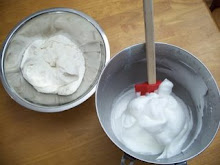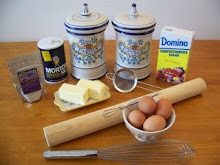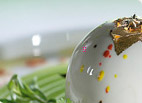
We all love Champagne this time of year, but nobody loves Champagne—anytime of year, in fact— like the French. My first holiday season with a French man brought this fact home, literally, with more Champagne than I could have imagined. With cousins visiting from France, cousins who produce Champagne for Moët et Chandon, there was an obscene amount of bubbly, most of it unlabeled, from the private family reserve.
It would be hard to describe with any clarity just what that first French-infused Christmas and New Year's Eve were like. After all, with so much Champagne flowing, that particular week from Christmas to New Year is pretty much one big, bubbly blur. Since that holiday, we haven't had his cousins to visit, but we still go for the Champagne big time, as you can see by my Fridge.

Shopping for Champagne
First things first, even if you already know this—I'm always surprised how many people don't know—Champagne comes from only one place in the world, the region of Champagne, France. Anything else must be labeled "Sparkling Wine" or "Champenoise." While there are a few Sparkling Wines out there that I have heard are pretty decent (mostly from California, Australia and New Zealand), I don't really drink the stuff. If it's not real Champagne, it's not usually on my table. The only sparkling wine I genuinely like is Lambrusco, a sparkling Rosé produced in my home town of Reggio nell'Emilia, Italy (Trader Joe's has a very nice one for a super bargain price).
If you're planning to drink a lot of Champagne in one night, and you don't have family bringing you cases from France, then you should consider buying a Magnum (= 2 bottles), a Jeroboam (= 4 bottles), a Rihoboam (= 6 bottles), or a Methuselah (=8 bottles). The sizes go all the way up to the ludicrously large Melchizedek, which holds 40 bottles. Thing is, you will save some dough by getting these larger bottles rather than buying their volume equivalent in normal, 750ml bottles. Plus, it is a fact that the Champagne in a Magnum and a Jeroboam actually taste better and are more bubbly than the standard size, and the Jeroboam is the best. But, this isn't the case as the bottles get larger than the Jeroboam.

Champagne Brands and Labels
While all real Champagne is better than Sparkling Wine, the best of the best are Louis Roederer's Cristal Champagne, Laurent-Perrier's Grand Siècle, Krug Cuvée, and any Moët et Chandon Vintage Dom Perignon. Of course Louis Roederer and Laurent-Perrier have other Champagnes that won't cost nearly as much and will be pretty darn fabulous even if they're not the top label. I never shell out the big bucks for a bottle (I let others do that for me), but if I stick to buying real Champagne—even a $40-$80 bottle like a Perrier-Jouët or Veuve-Cliquot—I'm never disappointed.
When it comes to reading labels, there's way more to know than I can tell you here, but I'll just give a few basics that will help you navigate. First, it's good to know that most all Champagnes are a blend of the Chardonnay, Pinot Noir and Pinot Meunier grapes. Any single grape Champagnes will be labeled "Blanc de Blanc" when it's pure Chardonnay, and "Blanc de Noir" when it's a pure Pinot Noir or Meunier.
The label designations that let you know how much alcohol is in the Champagne (it varies), are Extra Brut, Brut, Sec, Demi-Sec, Doux and Extra Doux, with Extra Brut being the most alcohol and Extra Doux being the least. You may be surprised to know that a Vintage or Reserve designation is actually given by the producer, according to what they deem is a particularly good year, but there are no regulations there to follow, it's basically just the producer's opinion. However, a Cuvée class Champagne does have regulatory standards to meet, so it's generally better than a Vintage or a Reserve. In any case, a Vintage, Reserve, or Cuvée are all best drunk about five-ten years from the year on the label.

Pouring and Preservation
My last tips are to always pour your Champagne against the side of a tilted flute, to control the bubble overflow. Also, pour Champagne into glasses that weren't washed in a dishwasher, but hand-washed. Even the slightest film left from a dishwasher isn't great when mixed with Champagne. If, for some unknown reason, you should have an unfinished bottle you want to save, get a proper Champagne stopper and it'll last one extra day. A wine stopper just doesn't work on Champagne.
While Champagne is never super cheap, really, who wants to drink something super cheap for a celebration? But, if you're on a tight budget, supplement just one bottle of Champagne with however many bottles of Lambrusco from Reggio nell'Emilia because it's a good, inexpensive companion.
As I gear up for that time of year when the Champagne flows freely, I can take comfort that one other wonderful thing about Champagne is the fact that the good stuff doesn't leave you with a terrible hang-over, however blurry your bubbly evening (or brunch) gets. When it comes to celebrations, I follow the French, and if you do too, your guests—not to mention your taste buds, head and tummy—will thank you.















